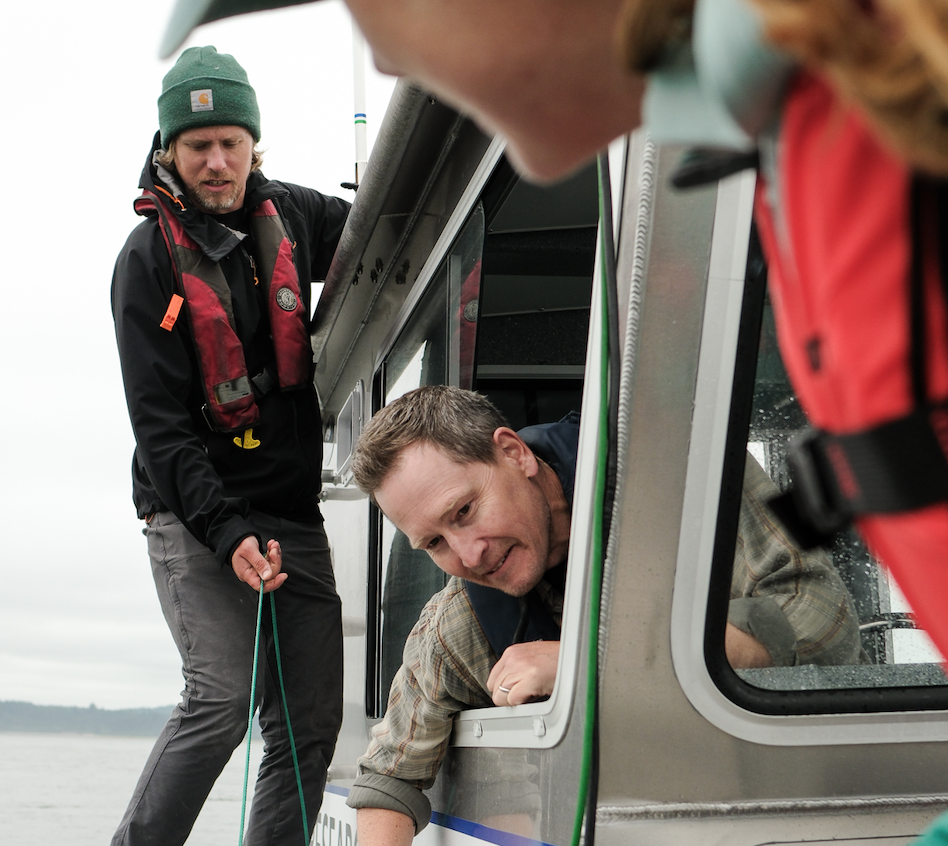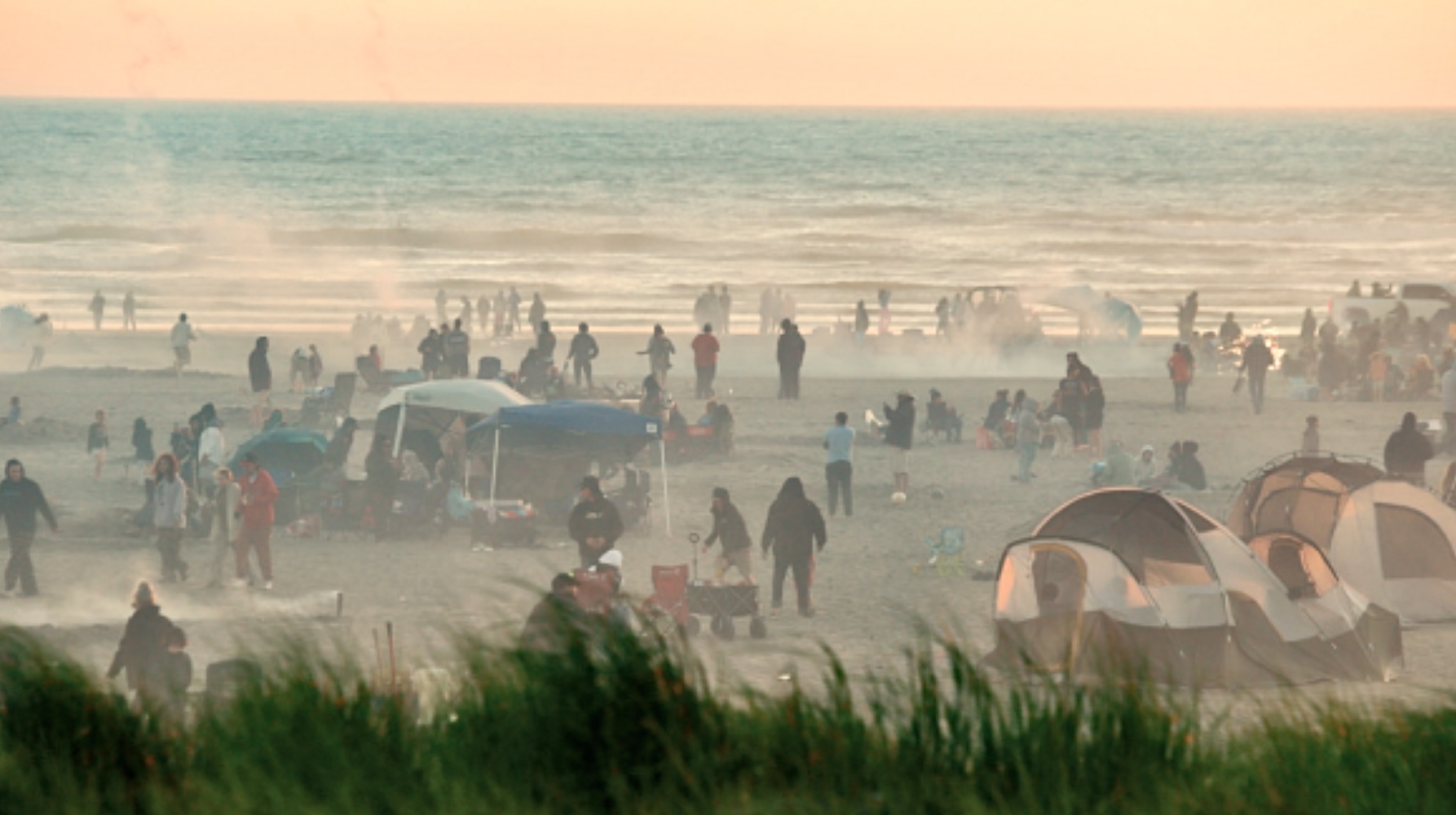Musseling Willapa
Published 4:00 pm Tuesday, October 31, 2006

- Snorkeling along a tributary of Ellsworth Creek, Washington Department of Fish and Wildlife biologist Molly Hallock searches for Western pearlshell mussels. The bivalves had been found in areas along both the Naselle and Bear rivers recently. Hallock, however, had no luck, as she said that unstable substraight may contribute to the mussels having a hard time anchoring to the river bed.
WILLAPA REFUGE – Local Native American people were right to honor salmon as the heart of Pacific Northwest life. More than just a symbol or cultural touchstone, salmon are proving to be vital not just for the health of local fishing and tourist economies, but to the ecosystem and a host of other species as well. From bears to bald eagles to freshwater mussels, other organisms depend on the annual return of the salmon.
Mussels?
While not endangered in the Pacific Northwest, freshwater mussels are declining in numbers, disappearing from creeks and streams where they once were abundant. Of the 300 North American species, the greatest variety found anywhere on earth, at least 35 have gone extinct and 75 percent are listed as endangered or threatened on the state level. These decreases are being blamed on a number of factors, including poor water quality and pollution, dams, the introduction of exotic species and the decline of native fish.
Admittedly poor travelers, mussels have still evolved a clever way to get their young upstream to establish new colonies. After the embryos develop inside the mussels, they are released into the water as tiny “glochidia,” which then, with any luck, hitch a ride to distant parts by attaching themselves in various ways to migrating fish.
The Pacific Northwest claims seven different species. But most of the research and conservation efforts on mussels have been carried out in the Southeast, where some states have as many as 175 different species, according to an organization called the Pacific Northwest Native Freshwater Mussel Workgroup. Not much is known about where the mussels are located or how many mussels there are locally.
But that’s changing. Personnel with the Willapa National Wildlife Refuge have joined forces with the workgroup and other organizations to conduct a survey of local waterways to discover mussel distributions, and what can be done to ensure their survival.
First-time look”This is the first time we’ve looked at freshwater mussels,” said Charles Stenvall, project leader with the Willapa National Wildlife Refuge. The refuge has been working diligently, and with success, to restore salmon runs to the refuge’s streams and creeks. The refuge is also considering ways to improve salmon habitat to encourage their return. One of the indicators of habitat health is freshwater mussels. The fate of salmon and mussels are intertwined.
So mid-October a group could be found gathering at the refuge headquarters on the eastern edge of Willipa Bay, preparing to literally dive right in and explore the local waterways. Made up of biologists from the U.S. Fish and Wildlife Service, The Nature Conservancy and Pacific Northwest Native Freshwater Mussel Workgroup, they split up into teams after a short organizational meeting and headed to different locations. For Al Smith, workgroup chair, and Marie Fernandez, refuge biologist, the destination was Cedar Grove Creek on Long Island.
The work beginsEarly in the morning under a gun-barrel gray sky threatening rain, the pair met at the refuge boat launch. Already garbed in their protective gear, wetsuits and waders, they donned protective hearing for the airboat ride over to the mouth of the creek. The water was calm and soon they arrived at the mouth of the creek.
A short distance up the creek the way has been blocked by trees felled by storms. From there, they travel on foot. Even reaching solid ground can be a challenge. Boots sink several inches into the mudflat, releasing its distinctive organic odor and characteristic sucking sounds as they pulled each step free.
Now the real work begins.
Smith is along as a consultant. Tall and lanky with boundless enthusiasm, he carries along a vital piece of equipment, a plastic tube with a clear end as they begin their assent up the creek. Because the water in the creek is running low, they will use this tube to peer into the water instead of snorkeling, another method of surveying for mussels. He has explored numerous creeks seeking mussels.
Petit of stature, with a calm humor and gentle smile, Fernandez has explored this particular creek numerous times seeking salmon and other wildlife denizens.
There is no easy, paved, waterside promenade to follow. They must climb, scramble and wade up the creek, over and under logs and around thickets of salal. Occasionally, they briefly follow elk trail, examining their tracks, until the trails veer away from the creek. Then it’s back to scrambling. But even while keeping an eye out for possible mussel habitat, they still take time to appreciate the remarkable beauty of the area.
On one bank, there is a fairy forest, a miniature of the ancient cedar forest towering over their heads. The lush green variety of mosses clinging to the bank so thick they would appear to make a perfect bed, if they weren’t so damp with moisture. At one point they stop to inspect a newt waddling across on island. At another, they briefly capture and admire a rare Van Dyke’s salamander before returning it to the forest floor.
Interesting life storyPeriodically they stop to inspect some promising spot and Smith and Fernandez discuss the mussels’ life history. Smith is sharing his experiences so Fernandez can conduct future surveys on her own.
The mussel they are searching for is called the Western pearlshell. They can be found only in permanent streambeds, where they are never exposed. Small, generally less than five inches, they can be very hard to spot. They anchor on rocks in areas with shallower substrates, such as sand, and prefer areas sheltered from rougher waters. They don’t do well on sandy creek beds. Amazingly, they can live to 100 years, one of the oldest living animals.
Although the mussels hitchhike on the salmon, this particular species latching onto the fishes gills, in return they also benefit the salmon. Mussels are filter feeders. They eat by straining the water and removing small suspended materials such as algae, bacteria, zooplankton and sediments. Studies have shown that water quality below a mussel bed is much higher than below. In other words, they act as natural water purifiers.
For salmon, water quality is important for their lifecycle. If the water is cloudy or of poor quality, bacteria is more likely to infect their eggs, destroying them. Improved water quality means higher egg survival rate, which means more salmon, which means more freshwater mussels upstream to improve water quality.
Not only do they improve water quality, but their excreted nutrient-rich feces, or “pseudofeces,” settles on the bottom, out of the water column, where it is more easily consumed by bottom feeders. Some of those organisms then become a food source for young salmon and other fish, completing the cycle.
In short supplySeveral hours later, the pair has completed their inspection of the stream. Completing their day, they hike out on a trail which winds through the ancient cedar grove, surrounded by massive trees. Overhead a raven calls as it navigates around the trunks, so close they can hear the whistle of its feathers in the air. They rendezvous with their airboat ride and meet up back at headquarters to compare notes with their fellow searchers.
The teams did not find mussels on any of the refuge streams, including the Cedar Grove Creek Smith and Fernandez searched. But a colony was found on Bear Creek, close to the reserve. Now, the ultimate goal is to somehow reestablish mussel populations on the reserve and determine why they are not there now. Perhaps the bottoms of the creeks are too sandy. Perhaps the water runs too violently during winter storms, dislodging them. Perhaps there is too much pollution.
Or perhaps they are gone because the salmon are gone. Not only are the mussels missing their host for dispersal, but, the team suggests, without the salmon sacrificing their bodies after spawning and releasing their nutrients back into the system, the mussels don’t have enough minerals to create their shells.
“There’s so little information on mussels in the Northwest, so even doing a survey is important,” even if mussels aren’t found, said Smith. “I’m really hopeful that the refuge can gather the information they need to reintroduce them.”









